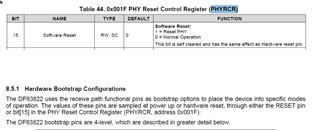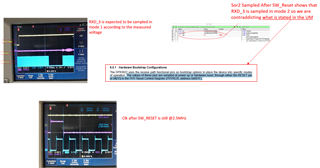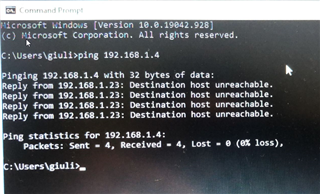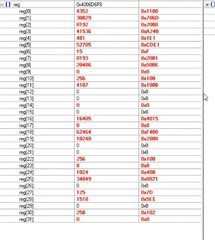Hello,
I'm working with a board in which your device is driven with a MAC whose GPIO are in weak PU after reset.
This causes a wrong sampling of RXD0-- RXD3 strap resistors. The device's reset is shared with the MCU, so my only option for a correct sampling of the strap resistors is to
force SW reset by means of PHYCR[15] after having disabled the PU resistors in the MAC's GPIO.
The configuration of Strap Latch-In Registers SOR1 and SOR2 after the physical reset is:
SOR1=0x5FD3;
SOR2=0x5
The PHYCR reset is launched waiting long enough (couple of seconds) after the GPIO configuration in order to let the nodes stabilize to the expected value.
what I see is that after reset is complete nothing changes in the values of SOR1 & SOR2.
Do you have any suggestions?
Another question: if I wanted to counter the weak PU with an additional PD, How far can I go with the value of the external PD in order to avoid stressing the phy's output buffer?
thanks so much for your support
Best Regards,
G





